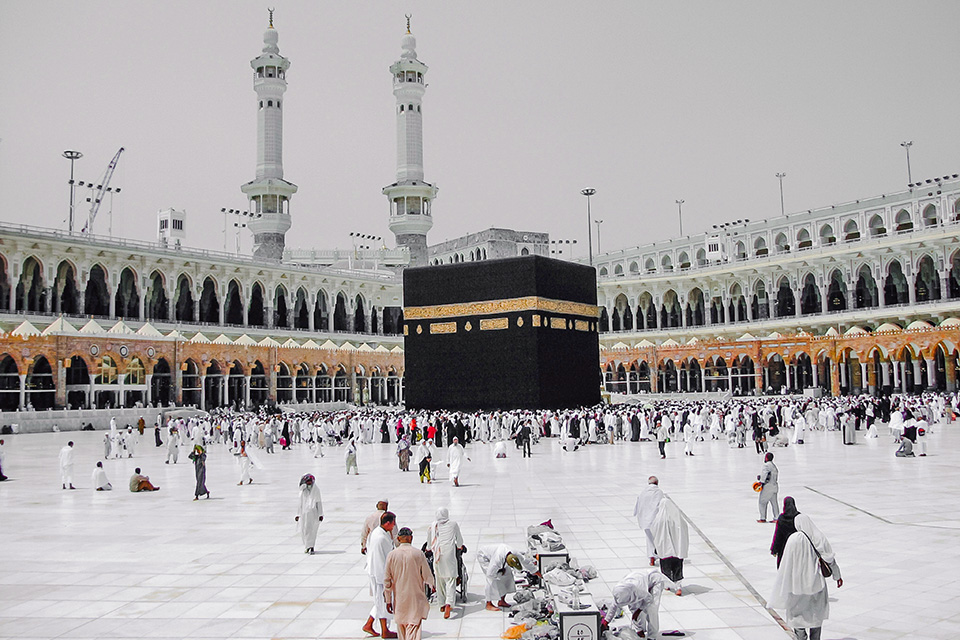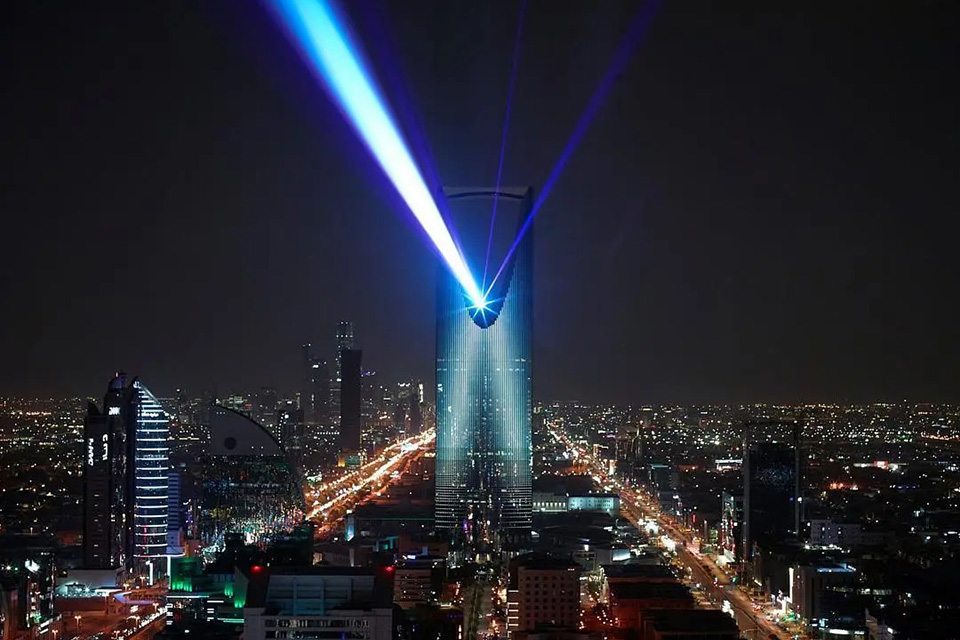- Umrah Visa
Umrah Visa for US Green Card Holders
Performing Umrah? Here’s how US green card holders can get a Saudi Umrah visa.
Introduction
The United States of America is home to about three and a half million Muslims. As Umrah is one of the five pillars of Islam, Muslims from all over the world are expected to go on the pilgrimage each year. Umrah is like a simpler version of Hajj, the main pilgrimage. It can be done at most times of the year, except during Hajj season. In 2023, 13.55 million pilgrims performed Hajj, 58% higher than in 2019. If you’re a Muslim in the US, what’s the process like to obtain a Saudi Umrah visa for US green card holders?
In this article, we share how US green card holders—otherwise known as US permanent residents—can obtain a Saudi visa to perform Umrah. Read on to learn more.
Eligibility
The simplest and easiest visa pilgrims can obtain that will allow them to perform Umrah is the Saudi electronic/e-visa or visa on arrival.
The good news is that US citizens and green card holders are among those eligible to apply for a Saudi e-visa or visa on arrival. With these visas, visitors are permitted to do many things in Saudi Arabia, from taking part in tourism activities, attending business meetings or business conferences, visiting family and friends, to performing Umrah.
Now, what is an e-visa? How easy is it for travelers to apply for it? What are the requirements? Let’s explore them in the next sections.
Application
As mentioned, US citizens and US green card holders are among those eligible to apply for a Saudi e-visa or a visa on arrival. What is this process like and what are the steps involved? Read on to learn more.
Option 1: Saudi e-visa
The Saudi e-visa program, launched in September 2019, makes it easier for citizens from eligible countries such as the US to secure a Saudi e-visa or a Saudi visa on arrival. It allows foreign nationals entry into Saudi Arabia for various purposes such as tourism, business, and even Umrah.
Apart from eligible nationalities (including dual citizens from eligible countries), permanent residents in the US, EU, or the UK; holders of visit visas (Schengen, US, UK); and residents in Gulf Cooperation Council (GCC) countries (Bahrain, Kuwait, Oman, Qatar, Saudi Arabia, and the United Arab Emirates) are also eligible for a Saudi e-visa or visa on arrival.
How the Saudi e-visa works?
Now that we know who is eligible for a Saudi e-visa, let’s understand how it works.
Under the new e-visa system, eligible travelers arriving in Saudi Arabia don’t need a visa sticker stamped on their passports. Instead, these are replaced by a printed e-visa featuring a QR code. This QR code will contain all the essential data and information about the passenger, effectively functioning as a digital visa. The e-visa can be accessed online and will be instantly delivered via email. Under an e-visa, you can typically stay in Saudi Arabia for a maximum of 90 days.
How to apply for a Saudi e-visa
To apply for a Saudi e-visa, visit KSA Visa–Saudi Arabia’s unified platform for visa applications–and select the e-visa of your choice, and fill out the online application form.
Provide your personal information and passport details. Next, upload a digital passport-size photo with a white background.
Based on your submitted application, the form will generate the corresponding visa validity: 365 days or 1 year for a multiple-entry visa and 90 days for a single-entry visa. Both single and multiple-entry visas are valid for a total of 90 days.
Visa fees
The visa application fee includes $80 for the visa fee (refundable), $10.50 for the visa digital service fee (non-refundable), $10.50 for the insurance digital service fee (non-refundable), and the insurance fees.
Note that the insurance fee will vary depending on your chosen medical insurance provider). You can pay via international debit or credit card.
Processing time
Now that you’ve completed your online visa application form, it’s time to wait. The processing time can take anywhere between 1 minute to 3 business days, so make sure you get an e-visa ahead of time. You’ll know if your visa has been approved once you receive an e-mail from KSA Visa.
Option 2: Visa on arrival
The next easy and convenient option that US citizens and permanent residents (US green card holders) are eligible for is the visa on arrival issued upon a foreign national’s entry into a country. Note that although it is a quick and easy way to get a Saudi visa, it might be more practical to apply for a Saudi e-visa ahead of time to avoid any surprises at the airport.
Similar to the e-visa, those who hold eligible citizenship (including dual citizens); have active US, UK, or Schengen visit visas; are permanent residents of the US, UK, or the EU; as well as GCC nationals or residents can avail of a Saudi visa on arrival.
The Saudi visa on arrival is valid for 1 year from its issuance date. The multiple-entry visa on arrival is valid for 1 year from the date of issuance. It allows the traveler to stay for a maximum of 90 days.
Option 3: Transit/Stopover Visa
There’s another way you can easily enter Saudi Arabia: the Saudi transit or stopover visa, which is open to all nationalities. It allows travelers to pass through Saudi land borders, airports, or ports. This is probably not the most ideal option for all, but it’s a good option if you are staying for less than four days in Saudi Arabia.
Travelers may opt to apply for a transit/stopover visa via Saudi Arabia’s Saudia or Flynas airlines by booking two flights with a suitable layover of between 12 to 96 hours. While the transit/stopover visa is free, it is still subject to administrative and medical insurance fees. Alternatively, travelers may apply for a standard transit/stopover visa via KSA Visa.
Frequently Asked Questions
We’ve discussed how US green card holders (aka US permanent residents) can obtain a Saudi visa to perform Umrah. But we’re sure you might still have some burning questions. Here are some answers to frequently asked questions.
What are the mandatory immunizations for Umrah pilgrims?
Umrah pilgrims must secure immunization for the following if they are traveling to Saudi Arabia for Umrah:
- COVID-19
- Neisseria meningitis
- Tetravalent meningitis (at least 10 days before visiting Hajj areas)
- Seasonal influenza (a dose of the Southern seasonal influenza vaccine)
What information is required for a pilgrim to register in Nusuk?
Provide the following information if you are registering on Nusuk:
- Passport number
- Visa number
- Date of birth
- Nationality
- Mobile number
- E-mail address
I can’t see my Umrah permit in the application after it was issued. What do I do?
If your permit doesn’t appear after issuance, just drag the screen down to refresh the page and it should be displayed.
Can I change my name on Nusuk?
Yes, you can change your name on Nusuk. You’ll need to delete your existing Nusuk account and register as a new user with the proper name. It should be updated instantly, otherwise, get in touch with the Enaya Center for Services for the Guests of God at the Ministry of Hajj and Umrah by calling 92000281.
Can I perform Umrah during Ramadan with an Umrah visa?
Yes, Umrah can be performed during Ramadan with a valid Umrah visa. However, the influx of pilgrims during Ramadan may affect the availability of accommodation and transportation.
Are there any restrictions on Umrah visa holders?
Umrah visa holders must abide by the rules and regulations set by the Saudi authorities. Violations may result in penalties or deportation.
Can you do Umrah in one day?
While it is technically possible to complete the rituals of Umrah within a single day, it is not the traditional or recommended way of performing Umrah. The customary practice involves spending a few days in the holy city of Mecca to perform Umrah with tranquility, devotion, and reflection.
However, circumstances may arise where individuals have limited time due to travel constraints or other commitments. In such cases, performing Umrah in one day is permissible.
It is advisable to allocate more time, if possible, to fully immerse oneself in the spiritual experience and take advantage of the blessings and opportunities for worship in the holy city of Mecca.
Can I perform Umrah alone?
Yes, it is entirely permissible to perform Umrah alone, without the need for a companion or group. Performing Umrah is an individual act of worship, and both men and women can undertake the pilgrimage independently.
Can I apply for an Umrah visa myself?
Yes, you can apply for an Umrah visa yourself, assuming you are eligible for a Saudi e-visa, which allows you to perform Umrah.
What does the word “Umrah” mean?
In Arabic, “Umrah” translates to “visiting a populated place.”
Can non-Muslims travel to Mecca and Medina?
No, non-Muslims are forbidden from visiting Mecca and certain parts of Medina considered sacred, such as the Prophet’s Mosque (Al-Masjid an-Nabawi).
Additionally, there may be restrictions on non-Muslims entering other religious sites or areas of significance within Medina. While the exact boundaries of these restrictions can vary, it’s common for non-Muslims to be prohibited from entering mosques and certain religious landmarks.
These restrictions are in place out of respect for the sanctity of these sites and to maintain the religious atmosphere for worshippers. However, you must check with local authorities or tour guides for the most up-to-date information on specific access restrictions for non-Muslims in Medina.
Conclusion
Every year, millions of Muslims fulfill their religious obligation to perform Umrah, considered the minor pilgrimage in Islam. Among these are thousands of Muslim Americans who are US green card holders, otherwise known as US permanent residents.
As US permanent residents, US green card holders are eligible for a Saudi e-visa and visa on arrival, two visas that allow visitors to perform Umrah. As an alternative, they may also consider obtaining a Saudi transit/stopover visa if they are passing through Saudi Arabia on a 12 to 96-hour layover.
For more information on how US green card holders can obtain a Saudi Umrah visa, visit KSA Visa.






